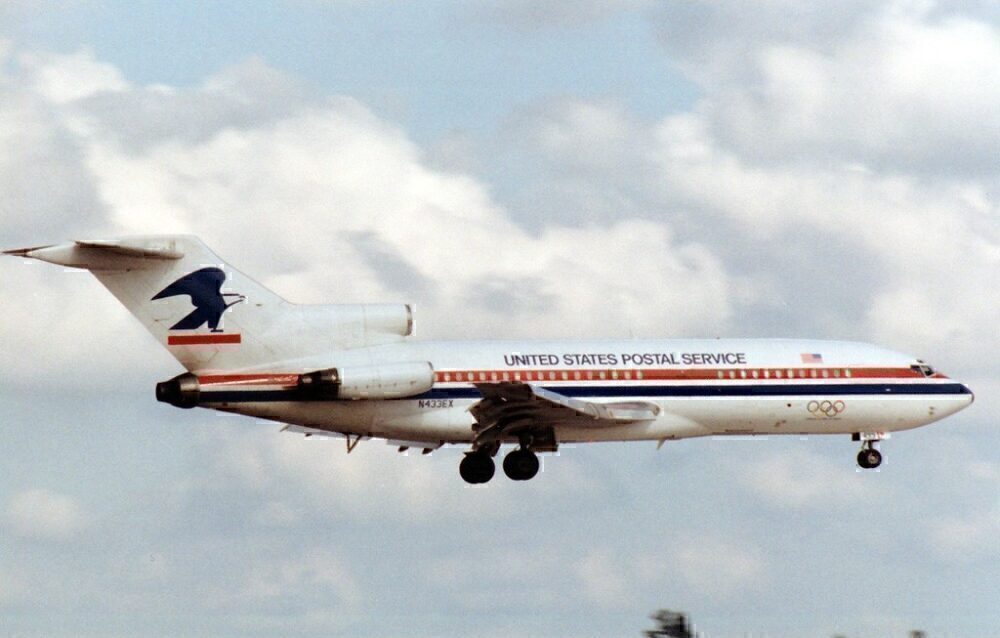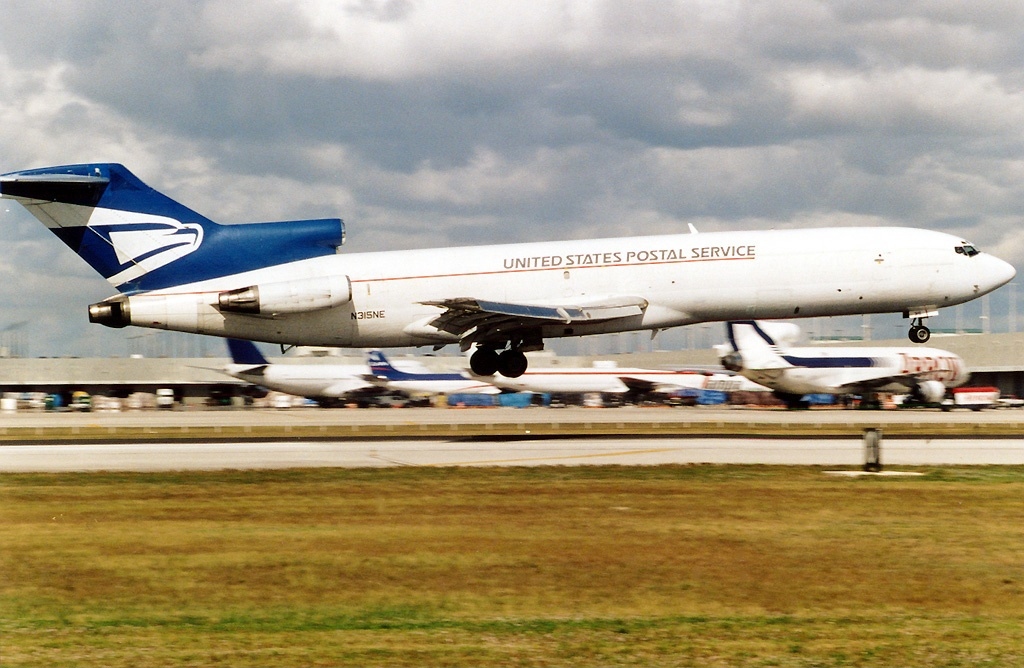The United States Postal Service (USPS) is the national delivery service for the United States. The agency boasts that it reaches every address in the nation, including 160 million residences, businesses, and Post Office Boxes (PO Boxes). However, for one of the world’s largest delivery services, there is something surprising about the agency: it doesn’t operate any aircraft. Here’s why.

The USPS
It is first important to understand what the USPS is. While it is an official agency, it receives no tax dollars for its operations, so everything it makes and runs is based on the sale of postage and its products and services for funding. It has 34,000 retail locations and an operating revenue of over $71 billion. Moreover, it delivers about 48% of the world’s mail and employs over 630,000 people.
USPS is well recognized for its cars and vans that go out and deliver mail. However, cars and trucks are not the most efficient form of transporting a lot of mail. But, as stated, the USPS does not have its own aircraft. Nevertheless, transporting mail by air is actually a rich part of USPS history. Let’s go back and see.

The history of airmail
In 1910, Frank Hitchcock, the Postmaster General at the time, flew in an aircraft in Baltimore. This was back in the infancy of aviation, so the aircraft were small, they had open cockpits, and none of the modern-day conveniences. Nevertheless, Mr. Hitchcock was a fan, and the next year, he authorized US mail flights. Eight pilots were sworn in as “aeroplane mail carriers” at an event, and it ran for just a few weeks.
Over the next few years, the USPS would experiment with many more experimental flights. Impressed by the results, in 1912, postal officials began lobbying congress for funding. In 1916, Congress authorized the use of $50,000 for airmail experiments. This is equivalent to about $1.2 million in 2020’s dollar.
In 1917, Congress appropriated $100,000 to establish an experimental airmail service. At first, the Army had wanted to operate the airmail service; this would allow its pilots more cross-country flying experience. The Postmaster General and Secretary of War reached an agreement in which the Army Signal Corps would lend its planes and pilots for airmail service. Finally, in 1918, an airmail service began between New York and Washington D.C. Benajmin B. Lipsner, Superintendent of Aerial Mail Service, said the following in 1918:
“The air mail route is the first step toward the universal commercial use of the aeroplane.”
He was not wrong. In 1920, the USPS expanded airmail to transcontinental routes with various stops in between. The agency also worked to install radio stations at more airfields to give pilots the latest weather information. By 1924, the USPS was looking at flying airmail overnight.

Finally, in 1965, the USPS received permission from Congress to contract airmail service from commercial aviation companies. It was a hit as commercial airlines kept on flying mail to more and more destinations. By 1927, all airmail was carried under contract. Airmail expanded internationally as well in the late-1920s and into the 1930s. By the 1960s, mail routinely flew in jet aircraft.
Some may, however, recall there being aircraft in USPS livery. These, however, were aircraft operated under a contract that had the USPS livery on it and not official USPS-owned aircraft.

What about today?
The USPS continues to contract out airmail flying. It negotiates contracts with commercial airlines to transport mail. This includes passenger carriers. In fact, some early airlines began their commercial career by flying airmail services. United Airlines was one such carrier. Western Airlines was another.
There is a very good reason for the USPS to avoid operating its own aircraft. First and foremost, it is a discussion of economics. Buying an aircraft, filling it with fuel, hiring pilots, and getting a ground game set up at airports is expensive, and mail is not a highly profitable business as is. If the USPS had its own fleet of planes, it would likely be flying them only to a few different destinations, mostly to where they have large distribution centers where mail can move from plane to truck. This would, undoubtedly, lead to delays in shipping.

Let’s also now look at mail itself. Most mail that the USPS transports is small. This includes letters and packages. These packages are all going to different destinations and do not yield as much revenue as larger pieces of cargo. So, flying a cargo aircraft across the country carrying only mail would be a massive waste of money, and the USPS would need to then optimize as a shipping company to make things work, which is rife with competition as is.
So, with small pieces of mail going to a variety of different destinations, it is much easier for the USPS to reach agreements with airlines to fly packages where they need to go. Rather than trying to fill up a large cargo jet like a Boeing 777F or 747-8F or Airbus A300 with low-revenue mail, it is cheaper and more efficient to fly that mail on a passenger jet, where an airline that already has the ground game and the route set up and will probably have some room for box or bag of mail. In fact, some airlines are even now using entire aircraft to fly mail as route networks across the country are slashed. Alaska Airlines is one such example. In addition to passenger airlines, the USPS also contracts with cargo airlines like FedEx.

A lot of mail also circulates locally. Think about your bills or letters and flyers sent out from new restaurants or businesses. This means that out of that chunk of mail sent, a smaller slice is heading to destinations far away that would mandate air travel.
Will the USPS ever fly its own planes?
It is unlikely. Setting up an airline is incredibly expensive and comes with plenty of logistical headaches. The USPS now has everything set up that works with this contract system. Plus, mail and packages are not the ideal cargo to fly on an aircraft. Cargo carriers traditionally fly heavier items alongside mail. For the USPS, flying mail-only planes would be incredibly expensive and almost certainly be running at a loss, which is not sustainable.

The USPS operating its own aircraft would also mean that the mail system becomes more inefficient, as the USPS would have to optimize its route network for airmail to run through major distribution hubs, which would slow down mail delivery as some mail might have to transit in another city that would previously fly nonstop on a commercial airline.
Do you think the USPS should fly its own aircraft? Let us know in the comments!
[ad_2]
Source link


